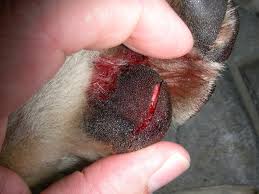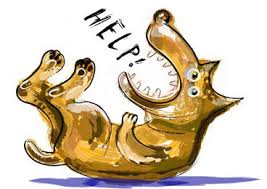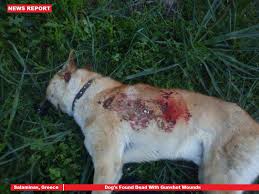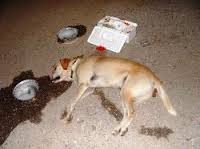Animals get injured. Hunting dogs, trail dogs, search and rescue dogs or companion dogs, all are threatened by the same dangers as humans. Walking on hot asphalt, stepping on a piece of glass, chasing a animal or stepping in a pricker bush or mound of ants, dogs are susceptible to potential injury on a daily basis. Only these threats are more pronounced because of the dog’s innate nature as a predatory animal, their lack of protective gear and not fully understanding the scope of the situation they are in. If your dog accompanies you on adventures or if he just happens to be at the wrong place at the wrong time when catastrophe strikes, you’ll want to be prepared for his safety and well being.
Some of these injuries are preventable by providing your dog with the proper equipment depending on the environment you are both in. However, accidents do happen, and you need to deal with the consequences. Your dog depends on you.
You wouldn’t think of leaving home without a first aid kit for yourself so don’t plan on traveling with your dog without some specialized gear for them. There are some common first aid considerations between humans and canines as well as some specialized kits for injuries specific to dogs. Many of the first aid skills you will learn to administer to a human can translate to your dog.
The best course of action if your dog has been injured is to get him to a Veterinarian. Since this isn’t always possible because you may be stuck miles away from civilization, or their might not be a civilization, you’ll have to take matters into your own hands.
 Broken Nails and Split Paws
Broken Nails and Split Paws
We wear boots on our feet and can forget about the terrain we are walking on. The only protection that our dogs have is the thick pads they have built up at the base of their feet. Dogs that spend plenty of time inside have softer, more vulnerable pads than those that stay outside.
Treatment : When a pad is cut, and believe me they do bleed a lot when cut, it is natural for your dog to lick it. You should clean it out as best you can and prevent further injury. Prevent your dog from walking or putting more pressure on their feet. Broken, cracked or ripped off nails also occur when they catch on cracks in rocks. Put some antibacterial ointment on the wound and wrap it with a bandage. If the pad hair is long, trim it with a pair of round nosed scissors. Keep the dog from licking the wound or tugging at the bandage by investing in some boots.
 Choking
Choking
Dogs investigate things by sniffing, licking and tasting them, which means all sorts of things can end up in your dog’s mouth. Like humans, dogs sometimes take too big of bites and will begin to choke. If your pet is choking but still appears to be breathing, try to calm him down. He will eventually work out the obstruction as long as air is getting into his lungs. Keep him upright and walking. If your pet’s tongue or gums are turning blue, he is in obvious distress. This means he has a complete air blockage and needs help in the next couple of minutes or he will die.
Treatment: Place your hand over the top of the muzzle and lift it up to open the mouth and to extend his airway. For an object that is visible, you can either reach in there with your hand and grab it or use thin pliers to pull it out. Be careful not to get bit. Be vigilant not to accidentally push the object farther down their throat.
If that doesn’t work, lay your dog down on his side. Place your hands at the very edge of his rib cage. Push down and slightly forward (towards his head) applying pressure in quick, firm strokes. Similar to the Heimlich maneuver, the results of your strokes may force the object out.
 Gunshot, Arrow or Puncture Wounds
Gunshot, Arrow or Puncture Wounds
You may take your dog out in the middle of hunting season and even if you take the appropriate steps to dress him in a orange vest, accidents can still happen. Negligent hunters will shoot at a sound before they identify what it actually is. As shooters, you may be familiar with the trauma kits carried during range time and you may have an understanding of how to medically manage our own injuries. But how do we take care of our dog if he accidentally gets shot?
Treatment: All bites, puncture wounds and cuts have the potential to become infected, so caring for them immediately is essential to the survival of your dog. If he is bleeding profusely, cover the area with sterile gauze or a clean towel and apply direct pressure until a clot forms. Stopping the bleeding is of the utmost importance. When and if the wound stops bleeding, remove any dirt and debris and clean the wound thoroughly. Apply clean gauze and wrap a bandage around it to prevent the dog from licking it.
 Snake Bites
Snake Bites
If a human is bitten by a snake, you should attempt to take them to a medical facility while keeping them calm. Dogs are susceptible to bites and stings because they are curious creatures. Some dogs have survived being hit by snakes where snakes have “dry hit” them while others have not lived more than a few hours.
Treatment: Unfortunately there isn’t too much you can do to treat a venomous snake bite on a dog except for wrapping something constricting around the limb just above the bite mark. (perhaps a strip of cloth or a belt) and making your way to get professional care. Do not try to suck the poison out or make incisions in the skin.
 Poisoning
Poisoning
Sometimes the curiosity of dogs can get the better of them and they ingest something they shouldn’t. For example, a lot of dogs will drink puddles of antifreeze because of the sweet taste of the toxin ethylene glycol, which makes it lethal. However, some poisons like azaleas or rhododendrons, chocolate and avocados, flea and tick products, household cleaners, your dog may eat or drink, can be treated.
Treatment: Never induce vomiting until you discover what they have been poisoned by. Many toxins are corrosive, and vomiting may damage the esophagus or cause choking. If the poison isn’t corrosive, give your dog a dose of one milliliter of three percent hydrogen peroxide per pound of body weight. Do not use ipecac or other human medicines. Use an eye dropper to administer the peroxide directly into your dog’s mouth. If your pet does not vomit, repeat the dose one more time.
 Trauma
Trauma
Perhaps something more dire may happen to your dog, such as a building collapsing on him or being hit by a car that will cause him a great deal of damage, like broken bones or internal injuries. Sadly, there will be situations where there will be nothing you can do other than make your dog comfortable and wait for the inevitable journey to Rainbow Bridge.
Treatment: If you are within distance of a vet clinic, strap your dog on a flat board to prevent him from any movement. Don’t put pressure on his chest as he may be suffering from internal injuries and this could hamper his breathing. If you suspect the dog has a head injury, keep his head elevated slightly above his body. Cover him with a blanket to help treat him for shock. Don’t splint any broken bones, but do stop the bleeding if there are compound fractures.
American Survival Guide, Volume 4, Issue 10
